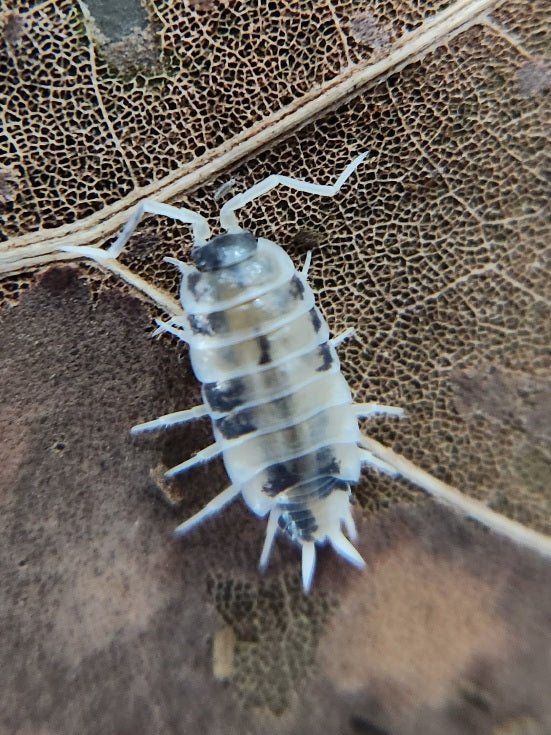Trichorhina tomentosa Dwarf White Isopod | FAQs
-
What are Dwarf White Isopods used for?
-
They are primarily used as a micro clean-up crew (CUC) in bioactive terrariums, vivariums, and reptile/amphibian enclosures. Their tiny size allows them to navigate small spaces, and break down waste without disturbing inhabitants.
-
-
How big do Dwarf White Isopods get?
-
They are one of the smallest commonly kept isopod species, typically only reaching about 2-4 millimeters (0.08-0.16 inches) in length as adults.
-
-
What do Dwarf White Isopods eat?
-
Like other isopods, they are detritivores. Their diet consists mainly of decaying organic matter such as hardwood leaf litter, decaying wood, fungi, leftover feeder insects, and animal waste within the enclosure. They also benefit from supplemental foods like occasional vegetable scraps (e.g., bell pepper, squash, pumpkin) and a dried protein source such as fish food flakes.
-
-
Do Dwarf White Isopods need special care?
-
They are relatively easy to care for but require a consistent moisture gradient. They thrive in damp substrate and appreciate lots of leaf litter and small pieces of decaying wood and dried protein for food and shelter.
-
-
How quickly do Dwarf White Isopods reproduce?
-
Dwarf white isopods are parthenogenic, meaning they are all females and asexually reproduce. They are known for their incredibly fast reproduction rate. A small starter culture can quickly multiply into a thriving colony, making them highly effective as a CUC that can keep up with the waste production in an enclosure.
-
-
Are Dwarf White Isopods visible or do they stay hidden?
-
Due to their tiny size and preference for moisture, they tend to stay mostly hidden within the substrate or under leaf litter and decor. You'll rarely see them actively crawling on the surface during the day, making them an "unseen" clean-up crew.
-
-
Can Dwarf White Isopods be kept with reptiles/amphibians? Are they safe?
-
Yes, they are very safe and beneficial cohabitants for most reptiles, amphibians, and invertebrates. Their small size makes them unlikely to bother the primary inhabitants, and they rarely get eaten by larger pets, though very small or newly hatched creatures might occasionally consume them.
-
-
What kind of enclosure is best for culturing Dwarf White Isopods?
-
A small plastic container with some ventilation holes is sufficient. A substrate of coco coir, peat moss, or organic topsoil mixed with decaying hardwood leaf litter and a piece of cork bark or rotting wood provides an ideal environment for them to thrive and breed. Dwarf Whites are the only isopods that coco coir is appropriate for as long as there is plenty of leaf litter and other botanicals. They actually thrive in coco coir.
-
-
Do Dwarf White Isopods bite or harm humans?
-
Absolutely not. Isopods are harmless to humans. They do not bite, sting, or carry diseases that affect people. They are simply decomposers.
-
-
Do Dwarf White Isopods require heating or lighting?
-
They do not require special lighting, as they are nocturnal and prefer dark, damp conditions. Standard room temperatures (around 68-78°F or 20-26°C) are generally suitable. If the enclosure they are in is heated for a reptile, they will typically adapt as long as a moisture gradient is maintained.
-


